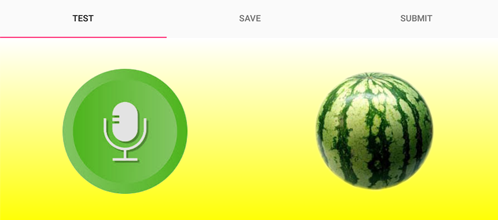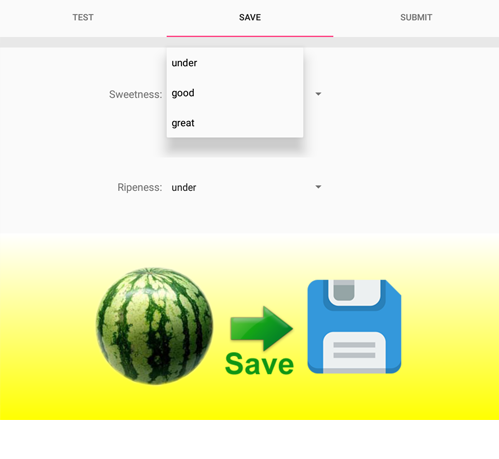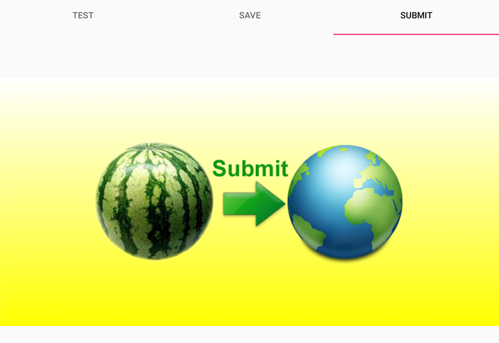Using Deep Network to predict quality of a Watermelon
About
The program attempts to determine the ripeness and sweetness of a watermelon: you knock on the fruit, it is analyzing the sound of it. As the echo a watermelon produces differs depending on its quality, the Deep Learning Network the app. uses can make a prediction before you cut the watermelon.
The program uses your feedback, allowing you to submit the samples you have recorded. the more samples you submit, the better the performance of a next version is going to be.
Available for Android devices.
Of course, the program is free.
Installation
Use Google Play to install Melonaire from this location. The program will ask your permission to use microphone: you should accept it for it to be able to record audio samples.
Recording the Sample
Start the Melonaire. Below is a screenshot of the first tab of the program's UI, entitled "Test".

Make sure the watermelon you are about to test is positioned firmly on some kind of a surface, particularly make sure, that when you knock on it, nothing resonates (like forks and spoons on a table etc). Ask everyone around to stop talking for a moment.
Hold the microphone of your Android device close to the watermelon. Press (just press, do not press-and-hold) the big green button with microphone on it. The program will begin recording a five seconds audio sample; it means that you have five seconds to:
... knock three times (knock-knock-knock) at the "equator" of a watermelon close to the microphone. There are two methods of knocking. First, you can knock with the tips of your fingers, by bending the wrist. This is the recommended method, as it produces the deepest echo. However, if you can not do it for some reason (long finger nails, for example) you can knock with your knuckles. Do not, however, slap the watermelon with your palm - this sound does not carry enough info for the program to analyze.
Video, showing how to knock properly. Make sure you produce sound echo. not just touching the sutface of a fruit.
Getting a prediction
Once you have a recorded sample, you can analyze it. To do it, press big "watermelon" icon on the same screen. The program will show you two estimations: ripeness and sweetness. Ripeness can be "under", which means that the fruit is too rigid, "good", which means it is, well, good, and "over", which means that it is like cotton with sand.
As for sweetness, it can be "under" (not enough), "good" and "great".
Saving Expert Opinion
You can run predictions in the store, choosing a watermelon. But let's say you have finally bought one. First, record a sample for it, as explained above. Then switch to the second tab of a UI, entitled "Save".

Here you can use the two combo boxes to add your feedback to the sample you have just recorded. This sample, together with your expert opinion you can later submit to us (see "Submit" section below.
Why is it so important? The Melonaire software uses the Deep Learning Neural Net to analyze the audio samples. To teach it, we need many samples, together with the information about quality of the watermelon the sample belongs to. The more samples we receive, the better prediction the next version of a program can make. And as the software is free, you will be able to update your copy to get a better prediction the next time.
A bit of theory. When you record an audio sample, as described in the previous section, a temporary file is being saved. The next sample will overwrite it.
However, after you assign your evaluations to the sample and press "Save", the file (now containing both audio sample and info about ripeness/sweetness) is being renamed. Next sample will not overwrite it: it is STORED.
You can save as many samples as you want, but only one per audio sample.
Submitting your samples
At some point, probably, when you have access to a fast Wi-Fi connection, you might want to submit your samples, so that we could include it in the training pool for the next version of our software. This is done on the "Submit" tab of an application.

Conclusion
Thank you for your help :)